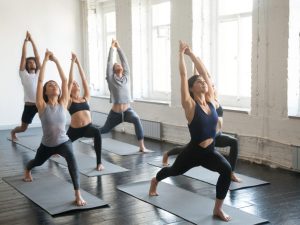Introduction
In the quest for physical well-being, our bodies often encounter challenges that call for special attention and care. Knock knees, a condition characterized by inward angling of the knees when straightened, can be a source of discomfort and affect overall alignment. Enter the transformative world of Yoga Harmony, an ancient practice that not only nurtures the body but also promotes balance and alignment. In this exploration, we delve into seven transformative asanas designed to provide nurturing relief for knock knees, guiding practitioners on a journey towards stronger, well-aligned legs.
Mountain Pose (Tadasana):
The journey towards alignment begins with the foundational Mountain Pose, also known as Tadasana. This pose, seemingly simple yet powerful, encourages practitioners to stand tall with their feet hip-width apart, grounding through the soles. The engagement of the thighs and the gentle bringing together of the knees create a strong foundation. Mountain Pose establishes a sense of balance and fosters awareness of the legs’ alignment – a crucial starting point in addressing knock knees through Yoga Harmony.

Warrior II (Virabhadrasana II):
Transitioning into the Warrior II pose, practitioners dive into a sequence that enhances both strength and flexibility in the legs. With one foot positioned forward and the other extended behind, the alignment of the front knee directly over the ankle becomes a focal point. Warrior II not only empowers the legs but also encourages proper alignment, making it a valuable addition to a Yoga Harmony routine aimed at addressing the imbalances associated with knock knees.
Tree Pose (Vrikshasana):
Shifting the focus to balance, the Tree Pose, or Vrikshasana, becomes a key player in this transformative sequence. By grounding one foot against the inner thigh of the opposite leg, practitioners engage the muscles around the knee, fostering stability and alignment. This pose not only promotes physical balance but also encourages mental concentration and awareness – essential elements in addressing knock knees through the harmonious practice of yoga.
Garland Pose (Malasana):
Deepening the practice, the Garland Pose, or Malasana, comes into play. As practitioners squat with their feet close together, this asana stretches and strengthens the inner thighs, providing relief for knock knees. Garland Pose offers a gentle release and realignment, inviting practitioners to explore the connections between their breath, body, and the alleviation of misalignments.
Extended Triangle Pose (Utthita Trikonasana):
Expanding the range of motion, the Extended Triangle Pose, or Utthita Trikonasana, takes practitioners through a sequence that emphasizes both strength and flexibility. With legs wide apart, one arm extending down towards the ankle while the other reaches towards the sky, this asana encourages a deep stretch. The pose promotes not only flexibility and strength in the legs but also encourages proper alignment, making it a valuable addition to the Yoga Harmony routine.
Butterfly Pose (Baddha Konasana):
Transitioning into the Butterfly Pose, or Baddha Konasana, practitioners open the hips and inner thighs. By bringing the soles of the feet together and gently pressing the knees towards the floor, the muscles around the knees are engaged. This gentle stretch fosters flexibility, alleviates tension, and contributes to the overall relief associated with knock knees within the Yoga Harmony practice.
Child’s Pose (Balasana):
As the Yoga Harmony session nears its conclusion, practitioners find solace in the comforting Child’s Pose, also known as Balasana. Kneeling on the mat, sitting back on the heels, and gently extending forward to lower the chest towards the floor, this resting pose provides a moment of reflection and relaxation. It allows the benefits of the practiced asanas to integrate, soothing the legs and promoting a sense of harmony.
Conclusion:
In the pursuit of addressing knock knees, Yoga Harmony emerges as a transformative and nurturing practice. These seven asanas, woven into a harmonious sequence, offer relief and promote alignment for practitioners. Each pose contributes to the overall well-being of the body, fostering strength, flexibility, and a sense of balance. As practitioners embark on this transformative journey, consistency and mindfulness become paramount. Embracing the power of Yoga Harmony, each asana becomes a guide towards stronger, well-aligned legs and a harmonious connection between body and mind. It is a journey of self-discovery, healing, and alignment – a testament to the profound impact of yoga on both the physical and spiritual aspects of our well-being.




